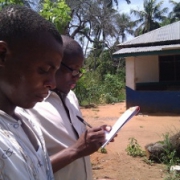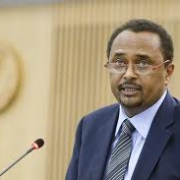Using ICTs to Address HIV/AIDS in Humanitarian Emergencies
Responding to humanitarian emergencies poses a complex set of challenges that is exacerbated in areas where high rates of HIV/AIDS exist. The number of people living with HIV/AIDS hovers around 33 million and the vast majority live in sub-Saharan Africa, bringing to the forefront the complex interactions between HIV/AIDS, food security, livelihoods, and humanitarian action. This unique set of issues leads to the question of whether ICTs can be leveraged to address HIV/AIDS challenges in humanitarian crises, and if so, which groups are already doing so.
ICTs have been a used as a means for addressing HIV/AIDS issues in humanitarian situations by global aid agencies. The United Nations (UN) has recognized the impacts on HIV/AIDS on food security and is responding by integrating HIV into humanitarian responses. A priority for the UN Office for the Coordination of Humanitarian Affairs (OCHA) has been to “ensure a sustained flow of information and analysis on AIDS and [HIV] needs of populations in humanitarian situations” by producing reports, web specials, audio reports, fact files, etc. on the Integrated Regional Information Networks (IRIN) website. For example, IRIN radio produced a weekly 10-episode radio drama on HIV and AIDS for Somalis to listen to in the crisis country. The drama started on October 15th and can be heard on the IRIN website.
Nongovernmental organizations are also using ICTs to address HIV/AIDS in humanitarian situations. FilmAid provides knowledge and empowerment to people suffering the effects of war, poverty, displacement or disaster through informational films. The organization works with communities to create films that are appropriate to the local context and relevant to community issues. One of the issue areas that FilmAid focuses on is Health & Safety, including HIV/AIDS. The organization has created various films relating to HIV/AIDS issues, such as a series of PEPFAR films that were shown in a Dadaab refugee camp in Kenya. The PEPFAR films were developed with the communities in Dadaab and promoted the prevention of mother-to-child HIV transmission, the uptake of voluntary counseling and testing (VCT), and abstinence.
The human rights organization WITNESS has created a video that tells the story of people living with HIV/AIDS in the war-torn Eastern region of the DRC, shown below. The film advocates for the provision of free testing, increased access to medical care, and prevention outreach in an area that desperately needs it.
These cases show that ICTs can be leveraged to address HIV/AIDS issues in humanitarian emergencies on many different levels, such as information flow, education, and advocacy. There is vast potential for increased ICT to more effectively and quickly address HIV/AIDS issues in humanitarian crises.








































